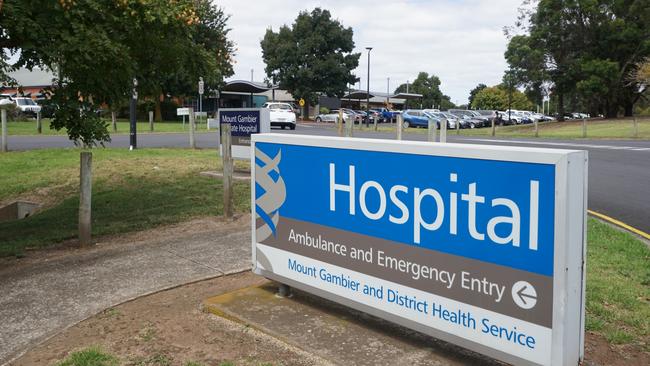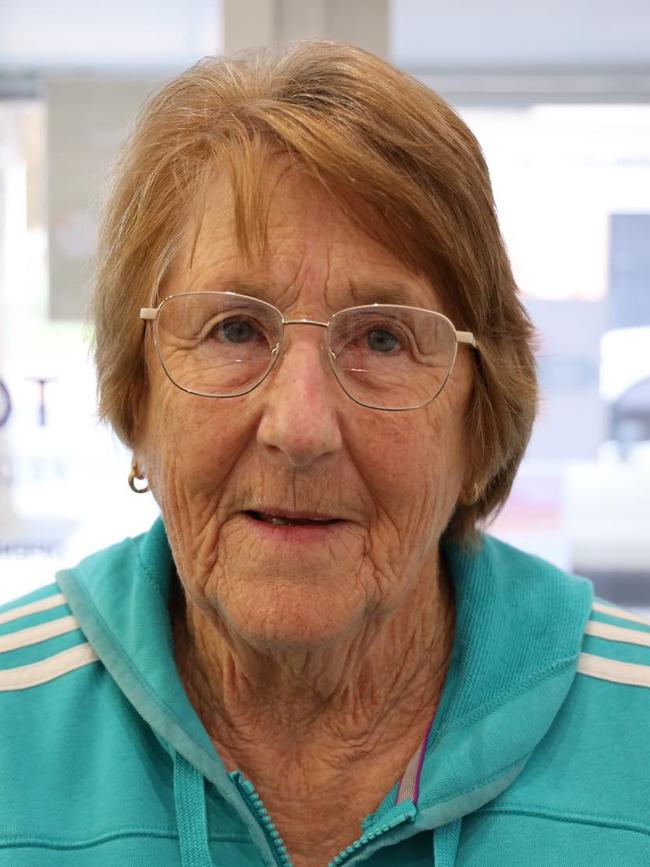Mount Gambier radiation treatment centre scrapped as feasibility study finds it’s not viable
Hopes for a radiation treatment centre in SA’s second largest city have been smashed after a long-awaited feasibility study found a critical problem.
Mount Gambier
Don't miss out on the headlines from Mount Gambier. Followed categories will be added to My News.
Mount Gambier locals say they’ve been left feeling like “second-class citizens” after desperate their pleas for regional cancer treatment were rejected.
Plans for a radiation therapy service won’t go ahead after a study found half of local cancer patients would still need to travel to Adelaide for treatment.
It means Limestone Coast cancer patients will be forced to keep travelling hundreds of kilometres – and spend weeks or months away from home – to receive care.
An independent feasibility study found a radiation treatment centre in SA’s second largest city was not a safe, sustainable or financially viable option.
Chair of the Limestone Coast Radiation Treatment Working Group, Lachlan Haynes, said they were “really disappointed” by outcome.

“We feel we put forward a very strong argument and basically were left not only very disappointed but certainly feeling like ourselves and the region are second-class citizens.”
SA remains the only mainland state to not have a regionally located Linac and radiation treatment service.
Mr Haynes said while people on the Limestone Coast are able to travel to Warrnambool to receive regional treatment instead of Adelaide, it wasn’t tenable people in the South-East had to rely on another state to for radiation treatment when their own region has an “absolute need”.
“It’s hard to read the study and rationalise that people fighting cancer just like us in places like Warrnambool, Mildura and Griffith can access treatment regionally, while we cannot.”
The Limestone Coast Local Health Network said the report found the “demand for radiotherapy is currently insufficient” despite “considerable desire from the community”.
The report found establishing a linear accelerator (Linac) in Mount Gambier – the best available radiation service for a regional setting – wasn’t sustainable because the current population would use only about 50 per cent of the service capacity, significantly adding to the workforce and financial challenges of running the service.

“If a service were established, more than half of local cancer patients would still need to travel to Adelaide for radiotherapy. The proposed Linac radiation therapy service would not be a suitable treatment for their type of cancer,” the LCLHN said.
Lorraine Musgrove, chairperson and client coordinator of the long-standing Mount Gambier Cancer Support Group said having a radiation centre in Mount Gambier would go “such a long way” in alleviating some of the hardships faced by country people fighting cancer.

“People who live in regional areas and get diagnosed with cancer and need radiation have to go through the trauma of leaving their families behind, taking time off work, having to find and pay for accomodation, travel, food, parking etc,” Ms Musgrove said.
“If there was treatment available here it wouldn’t have to be such a big deal.
“Most treatments only take 10-20 minutes, they could do their radiation and then go about their day.”
Ms Musgrove said the Cancer Support Group regularly encountered clients reluctant to seek treatment because they’re not sure if they could cope - financially and emotionally - with having to travel and stay in either Warrambool or Adelaide.
“We had one young mother with three school-aged children - she had to travel to Warrnambool every day and back for six weeks because her only other option was to pull the kids out of school and take them with her.
“A few weeks into her treatment she was so exhausted from travel that she did take her kids with her, but then she had to spend the week liasing with the school to get her kids’ work and make sure they didn’t fall behind.”

Instead of the radiation therapy service, the LCLHN will move forward with the development of a federally funded Cancer Care Centre at the Mount Gambier Hospital – plans for which were put on hold while the feasibility study was undertaken – and pursue delivering better, safer and more sustainable cancer care in the region.
This will include changes to the treatment regimen, reducing the requirement for travel, establishing a dedicated local cancer care leadership, as well as advocating for increased financial support available for travel and accommodation through the Patient Assistance Transport Scheme (PATS) and other sources.
“We have reviewed and thoroughly considered what the independent study has found and have recommended options that we believe will provide the most immediate benefits for the community to access comprehensive cancer care close to home,” LCLHN Governing Board Chair Dr Andrew Saies said.
“These changes should result in a significant reduction in the number of days of travel and nights away from home for Limestone Coast patients and their families.
“They will focus on improving their social and emotional wellbeing and reduce barriers to treatment.”
SA Health Minister Chris Picton said he welcomes the LCLHN Board decision to endorse the several “common-sense” recommendations proposed in the study to continue to grow local cancer services for the region.
Mr Haynes said the “disappointing” verdict from the feasibility study is not just a Limestone Coast issue, but a statewide one.
“We believe that if Mount Gambier - therefore, the Limestone Coast region - was able to offer radiation treatment, it would open the doors for people across the state to seek treatment in a regional area rather than a metro one,” Mr Hayes said.





